While we’ve had a few frosty mornings so far this fall, this morning we received our first snowfall- a total of around 4″. Tennessee was sure happy to get out for his morning walk (snowball feet aside), but the chickens didn’t know what to make of it, so they’ve stayed under the barn today.




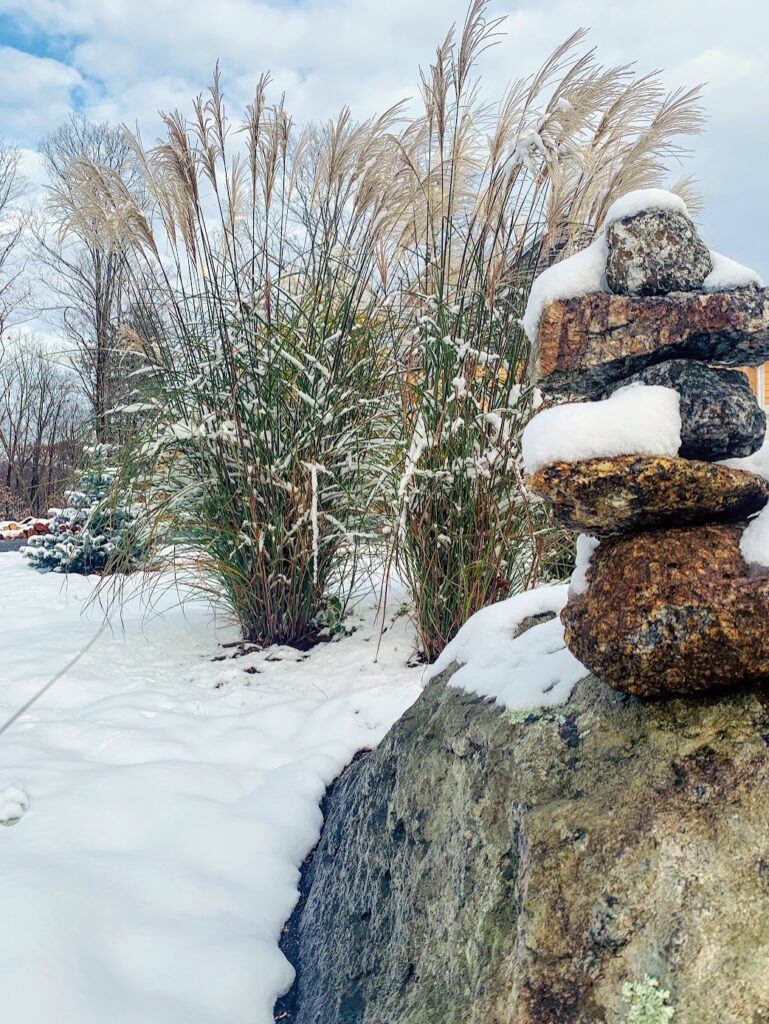
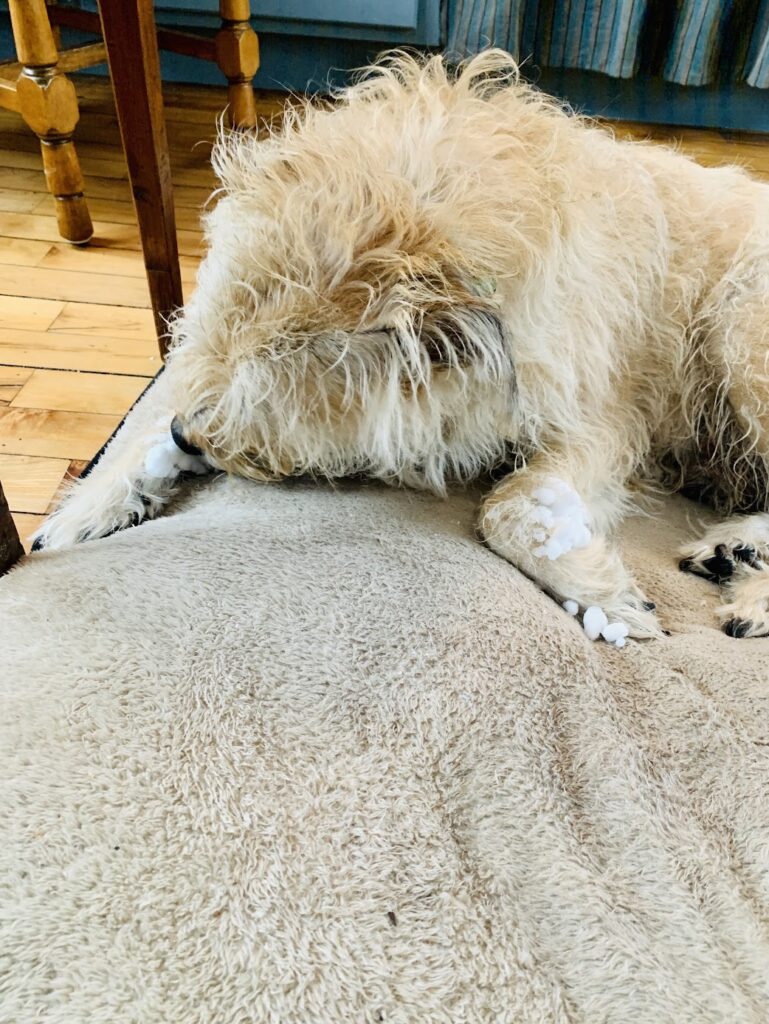
We’re feeling really good about what we were able to accomplish over the summer to not only preserve this old house for the next generation, but to make it more comfortable as well. We were able to fully complete our pre-winter to-do list: the house, barn, cars, and homestead, are all ready for winter. We’re really looking forward to hunkering down, and just enjoy living in this old home. We have plenty of firewood stacked up to help keep us warm, which brings me to our new stove.
Ever since we began thinking about embarking on this journey of living in and restoring an antique home, one of the things we found most appealing was living simply, intentionally, and as much like Daniel and Abigail (or at least our grandparents,) lived as we could. While we love cooking on the open hearth in the keeping room, it’s not practical for everyday. We thought about, and actually got our hands on, an antique wood cookstove for the kitchen to replace our modern gas stove. Our c.1912ish Glenwood wood cookstove is a beauty, but it has a very small firebox, as well as a somewhat unknown condition, plus our homeowner’s insurance company wasn’t too keen on the idea. We sat on it for a while to think about it, as it was a huge commitment to take out half the kitchen and replace it with a wood-burning appliance we weren’t sure was going to work for us. We had been interested in a modern wood cookstove after seeing one in use by one of the homesteaders we follow on YouTube, but just couldn’t decide. While talking to our HVAC guy (of all people), he pointed out that any wood cookstove would not be period correct anyway, so why not go for functionality (and UL certified!) I suppose since our house has climate control and plumbing, not to mention electricity, this made sense, so we ordered an Amish-built Kitchen Queen stove. It arrived by semi truck, and since we’re a farm in the middle of nowhere, he was able to back right up to the barn door, and lower it right inside. After we took it out of its crate, we lightened it as much as possible (it was about 700 pounds total), and Jenny and I used a heavy-duty appliance dolly to wheel it through the ell, and into our kitchen. Once hooked up to the chimney, we fired it up! Now it’s Toby’s (our cat) new favorite place. It’s a steep learning curve cooking with wood, but we’ll get there, and are enjoying learning its limitations and benefits. And it excels at one thing- heating the house! We can load the firebox, heat the kitchen to the upper 70’s, and the wood lasts 6-8 hours. We could make it last longer, but it would likely soot up the system. The heat carries through the house pretty well, so we’re hoping not to need our furnace much this winter. And just so you know, our first apple pie turned out amazing!
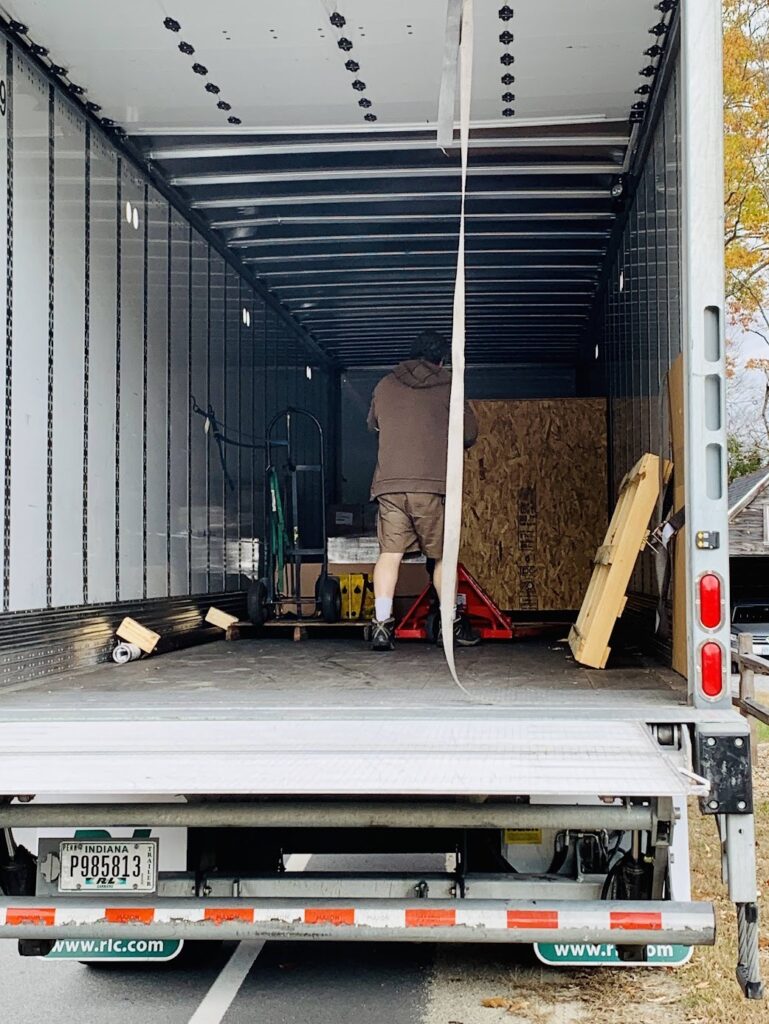
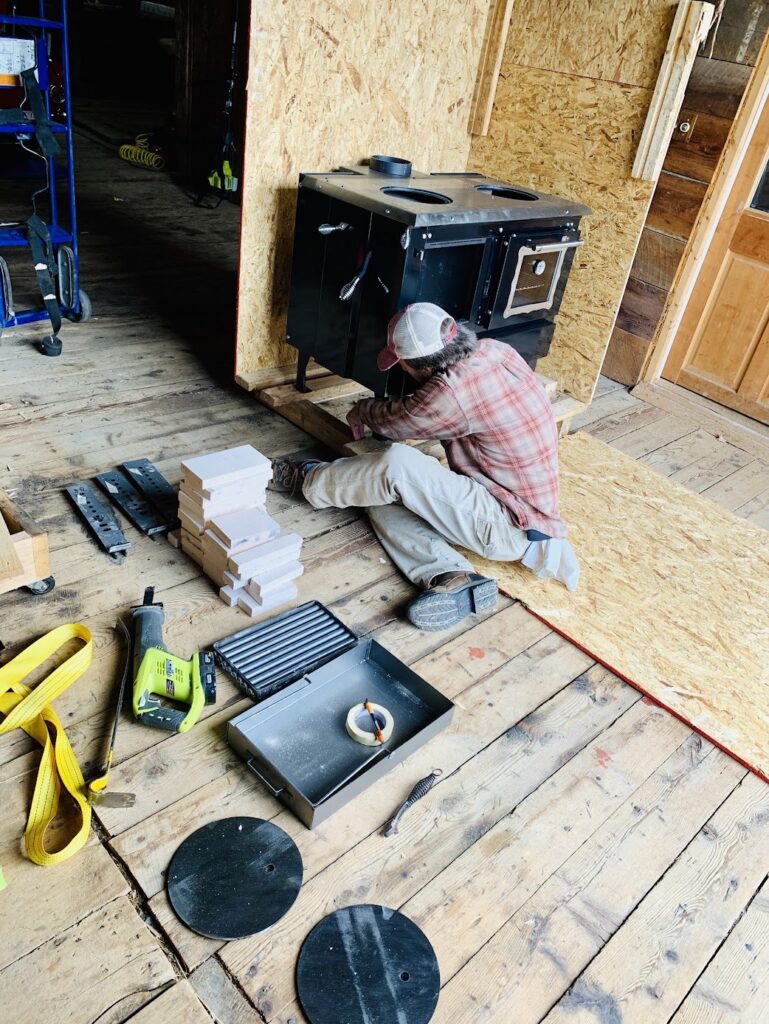
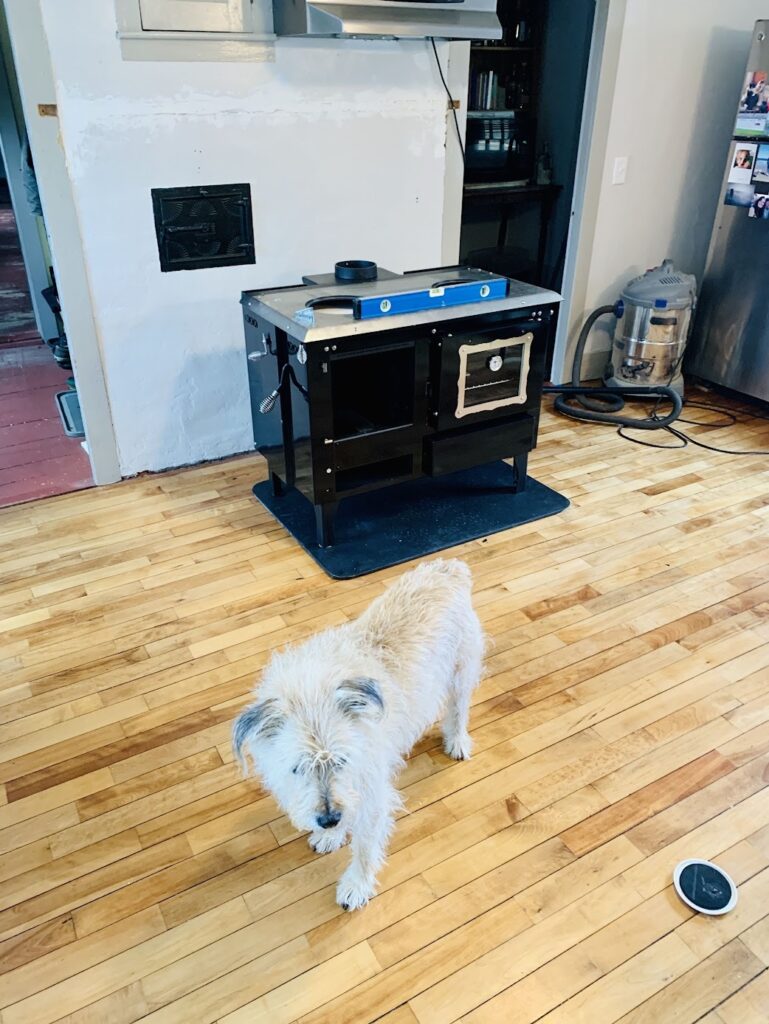
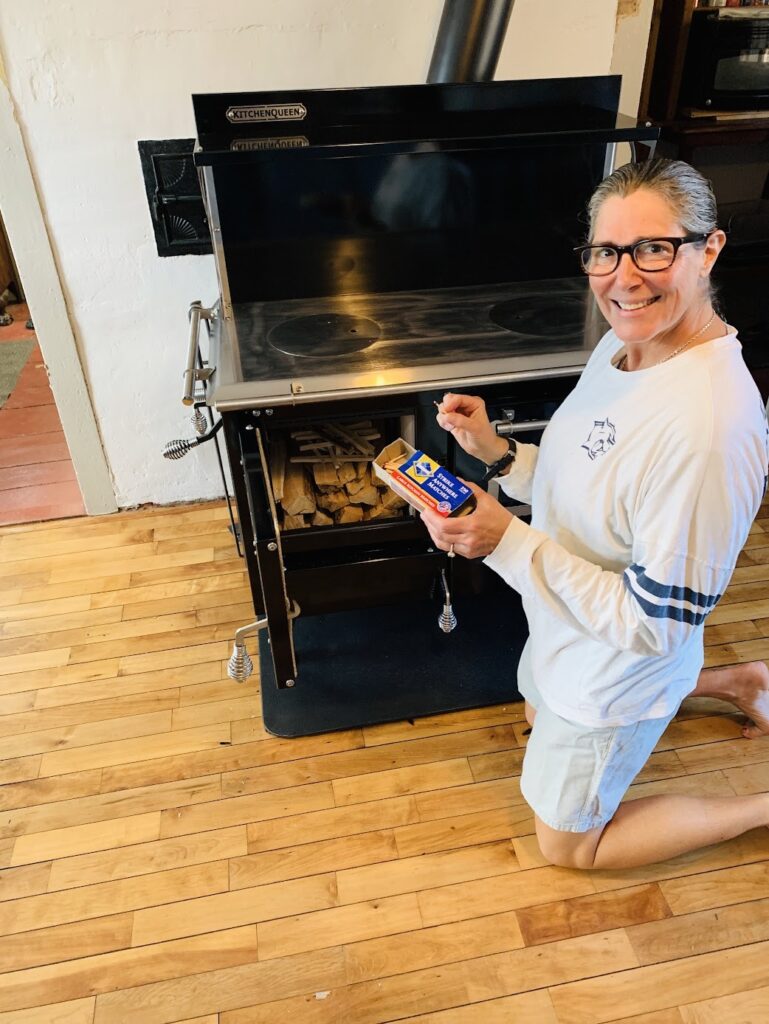
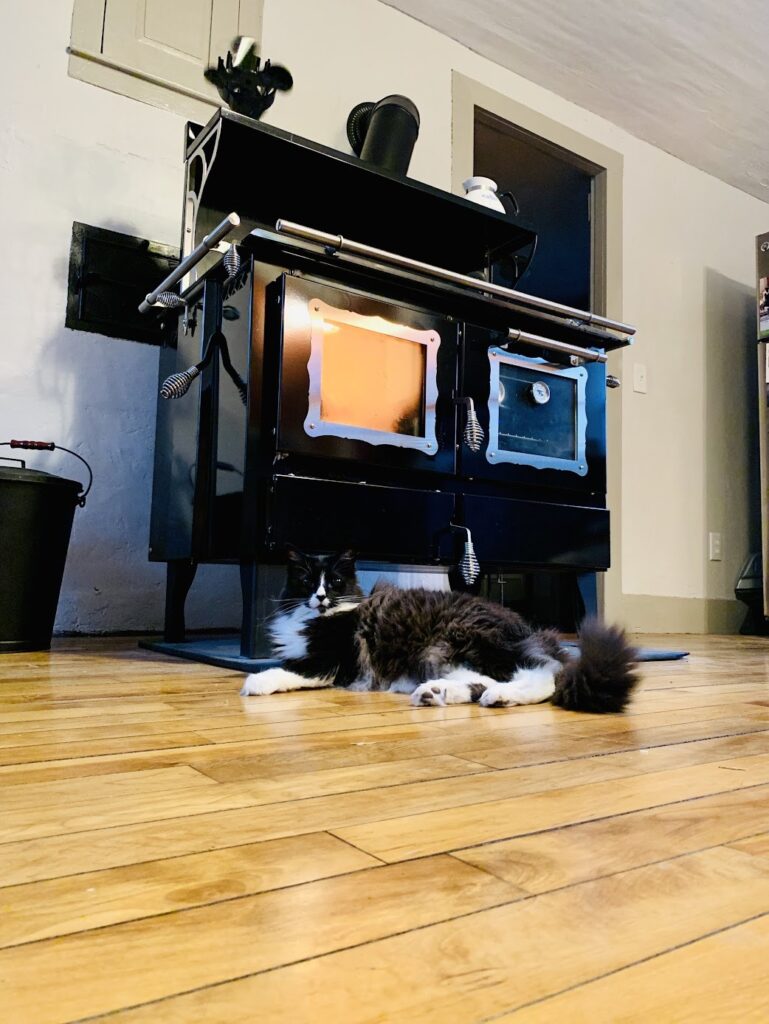
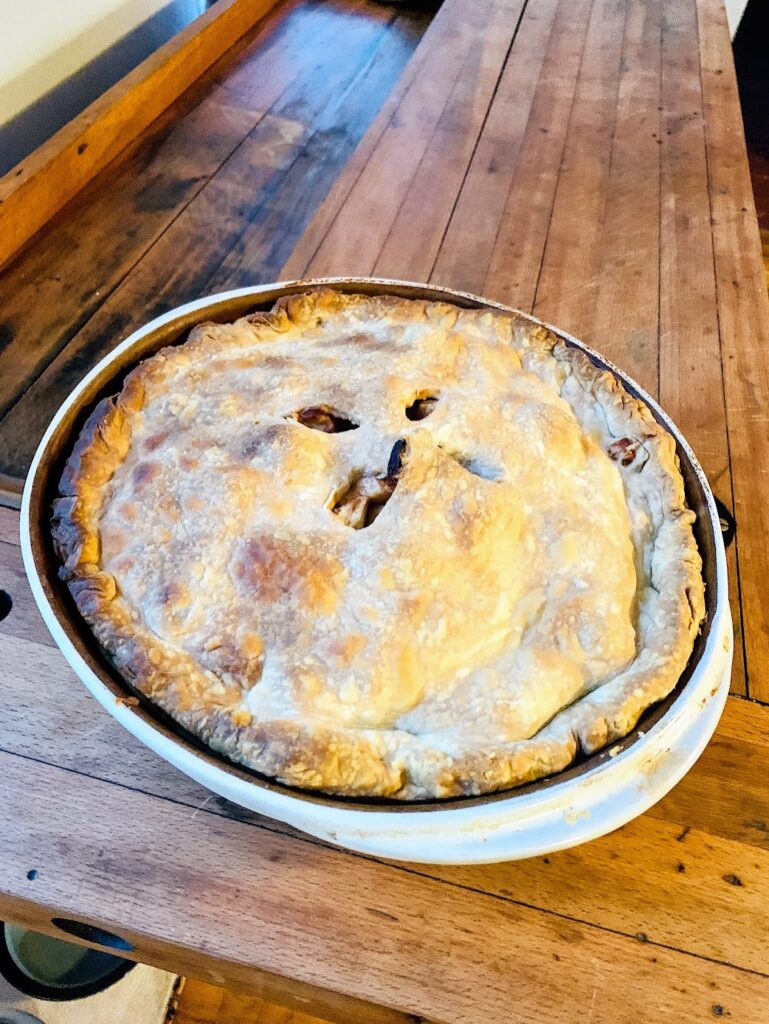
In order to make room for the wood stove, we had to move the antique workbench we had been using as an island over to the side wall by the windows. There was an old gas heat stove there, which we had disconnected when we re-sided the ell, so we took it out altogether, and refinished the floor underneath to match the rest of the kitchen.





One of the other things we’d been meaning to do this fall was to clean up and expand the orchard/food forest. We had cleared enough of the hillside behind the house to plant five apple and two pear trees last spring to compliment the antique pear and apple already there (as well as blueberry, strawberry, and raspberry shrubs). We had freed those old trees from the overgrown mass of vines and invasives that covered this hillside when we got here. Our excavator guy was able to dig up and remove stumps and boulders from the entire back hillside, and regrade the whole slope, so not only did we more than double our growable orchard area, but made it more manageable to mow and maintain. After he did a final grading and power-raking, we planted perennial rye, then covered it with straw for the winter.
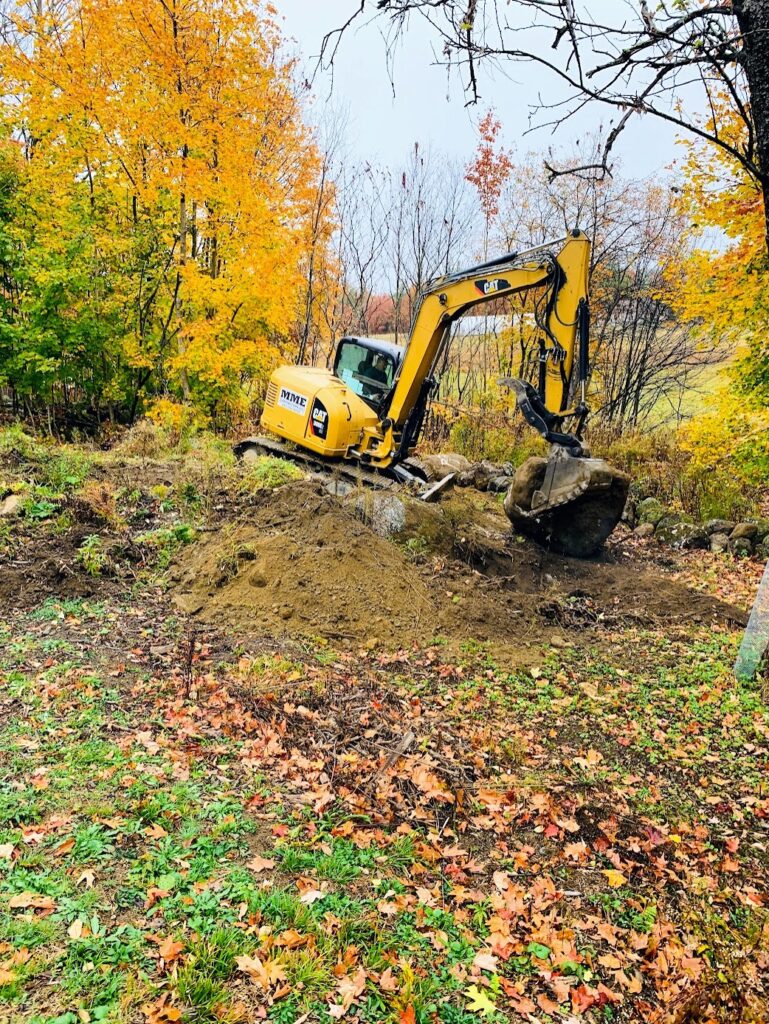
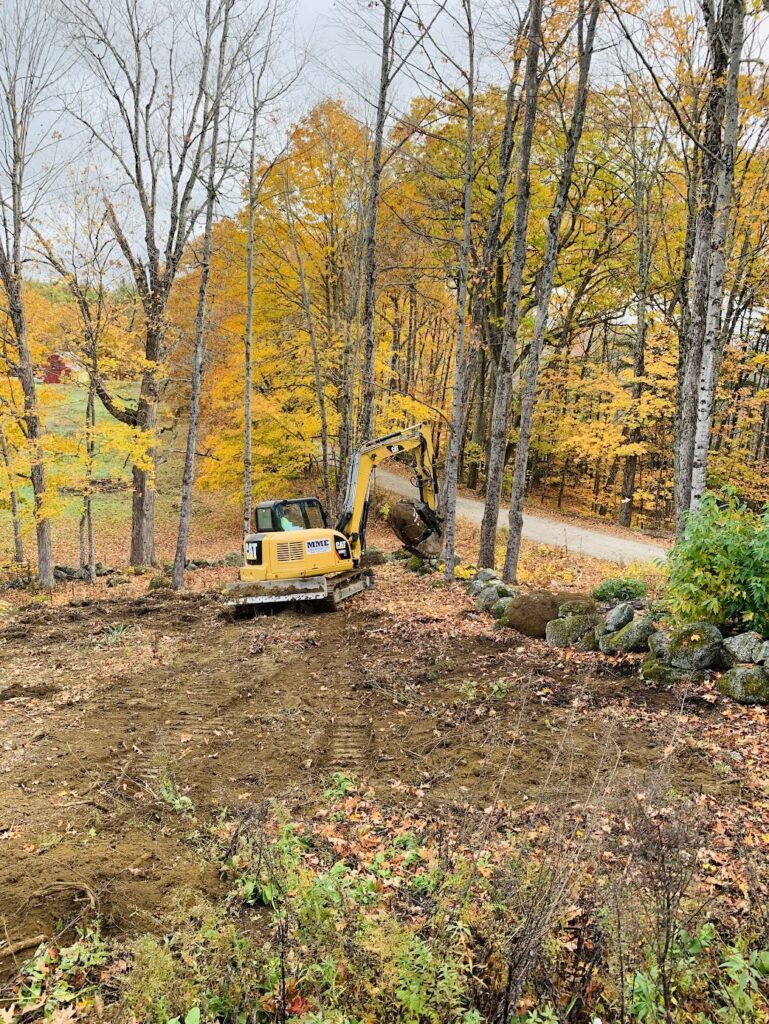

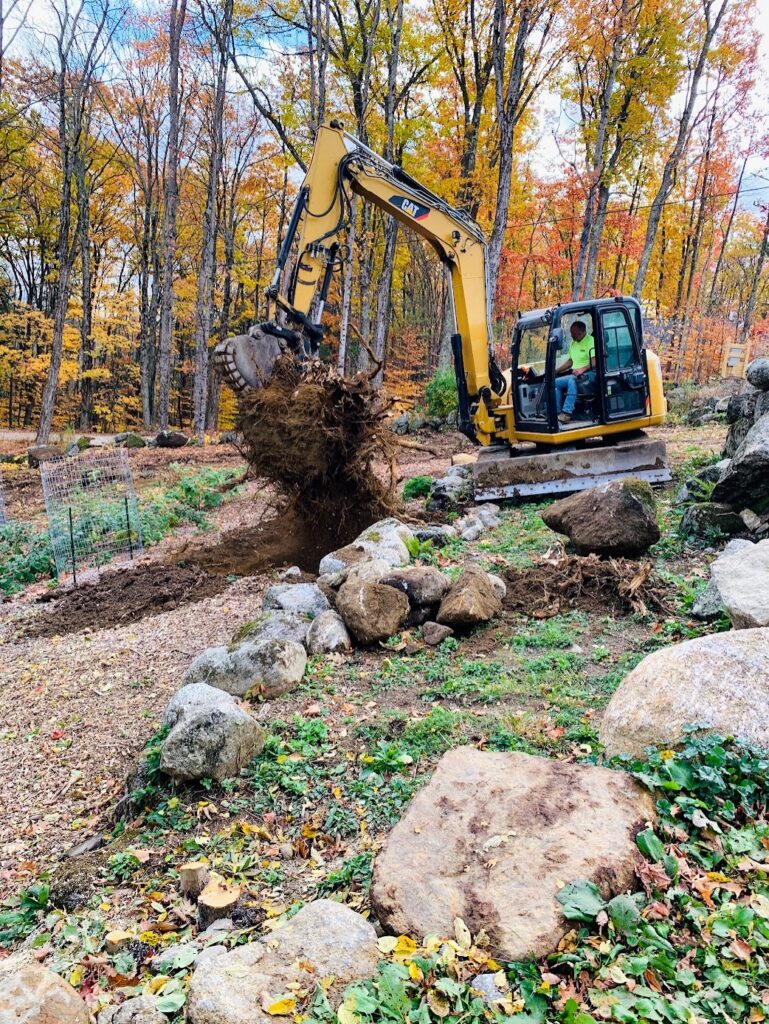
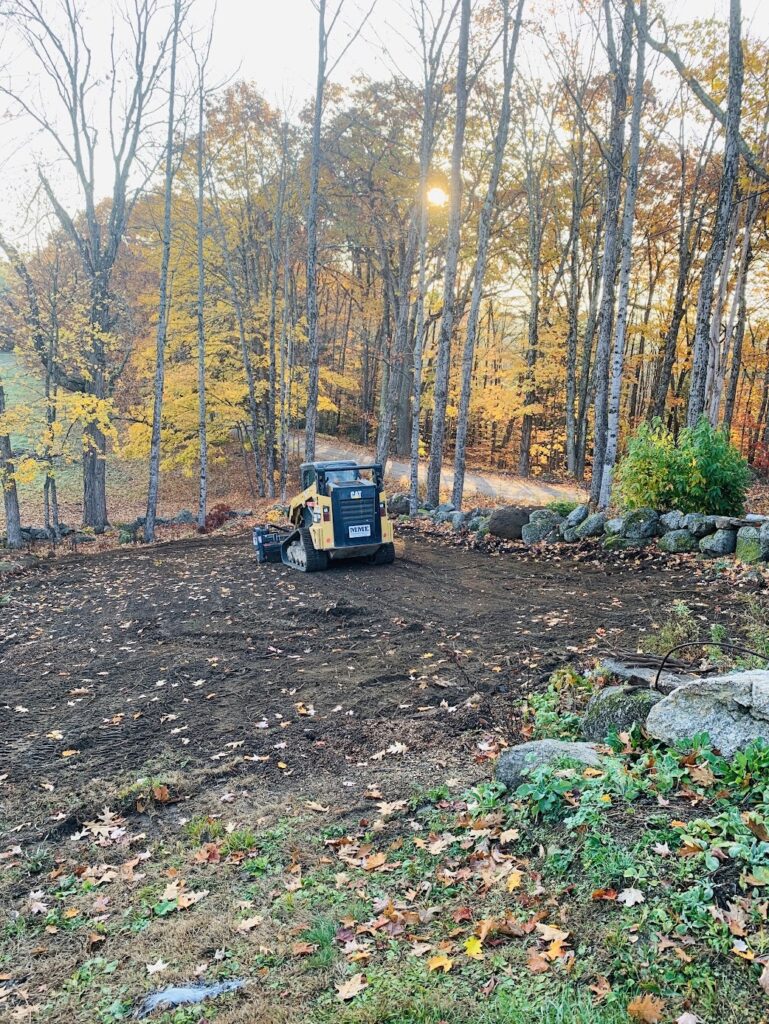
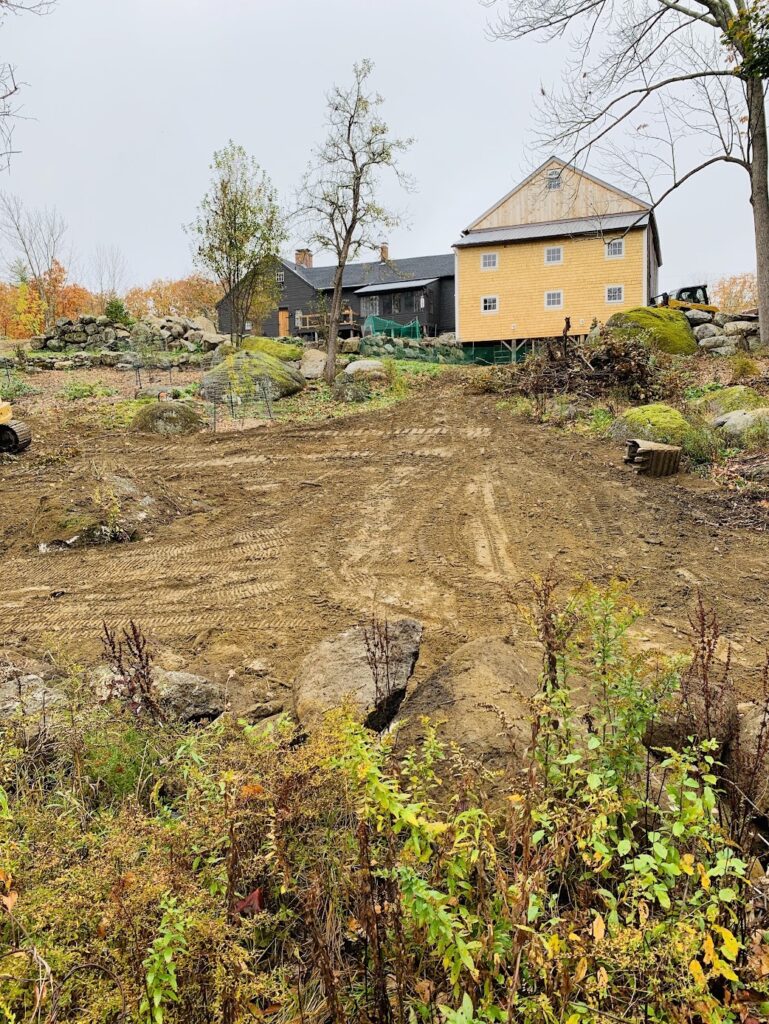

We’re so blessed and grateful for the opportunity to live this lifestyle, and care for this old farmhouse. We hope that we bring it the honor and care it so deserves. As I was standing below the orchard this morning (about where the photo above was taken), watching the snow fall, I imagined Daniel standing at the bottom of the hill, looking up at his homestead- was he feeling ready for winter, or apprehensive that his preparations would fall short? He called this place home for 34 winters- 34 autumns of preparing for the next season. 34 winters of watching snowfalls, and seeing the beauty in the landscape around him. 34 winters of seeing the glow and warmth from the hearth inside, and knowing his bride Abigail was waiting inside to help him shake off the cold. We literally think about Daniel and Abigail every single day. We may be the only people for generations who have thought of them. But we do, and we feel so connected to them through this house and landscape. That’s why I touch every surface of this place as I move about the house and barn- Daniel did the same, so it’s the closest I can come to shaking his hand and thanking him for building this house that would become my home.

Thank you Daniel. It’s a fine home. ‘Tis a fine home.
Be well, and God bless!

Leave a Reply